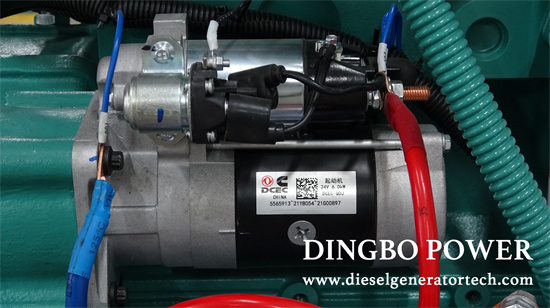The vibration of diesel generator may occur in use, so what is the cause? Below, we will briefly introduce Dingbo Power Generation Equipment to you.

1. Some imbalances in the transformation are mainly caused by the imbalance of the rotor, coupler, coupling, and transmission wheel (brake wheel). The solution is to first find the rotor balance. If there are large transmission wheels, brake wheels, couplers, and couplings, they should be separated from the rotor and balanced separately. Another is the transformation of some mechanical looseness. For example, if the iron core bracket is loose, the diagonal keys and pins become loose due to failure, and the rotor is not tightly tied, it will form a transformation and some imbalance.
2. Some mechanical problems mainly include the following points:
(1) Some shafts in the linkage are misaligned, the centerline does not coincide, and the centering is incorrect. The primary reason for this type of problem is due to poor alignment and improper installation during the installation process. There is also a situation where some of the center lines of the linkage overlap during cold state, but after running for a period of time, the center line is damaged due to deformation of the rotor fulcrum, foundation, etc., resulting in oscillation.
(2) There is a problem with the gears and couplings connected to the motor. The main manifestation of this problem is poor gear engagement, severe tooth wear, poor smoothness of the coupling, tilting and misalignment of the coupling, incorrect tooth shape and pitch of the toothed coupling, excessive clearance or severe wear, which can form certain oscillations.
(3) The drawbacks of the motor's own layout and the difficulties of the device. The main manifestations of this kind of problem are elliptical shaft neck, winding shaft, excessive or small gap between shaft and bearing bush, poor stiffness of bearing seat, root plate, foundation, and even the entire motor device foundation, loose fixation between motor and root plate, loose foundation bolts, and loose connection between bearing seat and root plate. However, if the gap between the shaft and the bearing pad is too large or too small, it can not only cause oscillation but also cause the smoothness of the bearing pad and abnormal temperature.
(4) The load conducted oscillation driven by the motor. For example, the oscillation of the steam turbine of a steam turbine generator, the oscillation of the fan and water pump driven by the motor, leads to the oscillation of the motor.
3. Some electrical problems are caused by electromagnetic reasons, mainly including: short circuit in the rotor winding of a wound asynchronous motor, incorrect connection of the communication motor stator, inter turn short circuit in the excitation winding of a synchronous motor, incorrect connection of the excitation coil of a synchronous motor, broken rotor bars of a cage type asynchronous motor, deformation of the rotor core, uneven air gap between the stator and rotor, causing imbalance in air gap magnetic flux and then oscillation.
Dingbo Power was founded in 1974 and is one of the earliest manufacturers of generators and diesel generator sets in China. If you want get more information, please feel free to send email to sales@dieselgeneratortech.com we will pay highly attention on your question.
Comments
Post a Comment